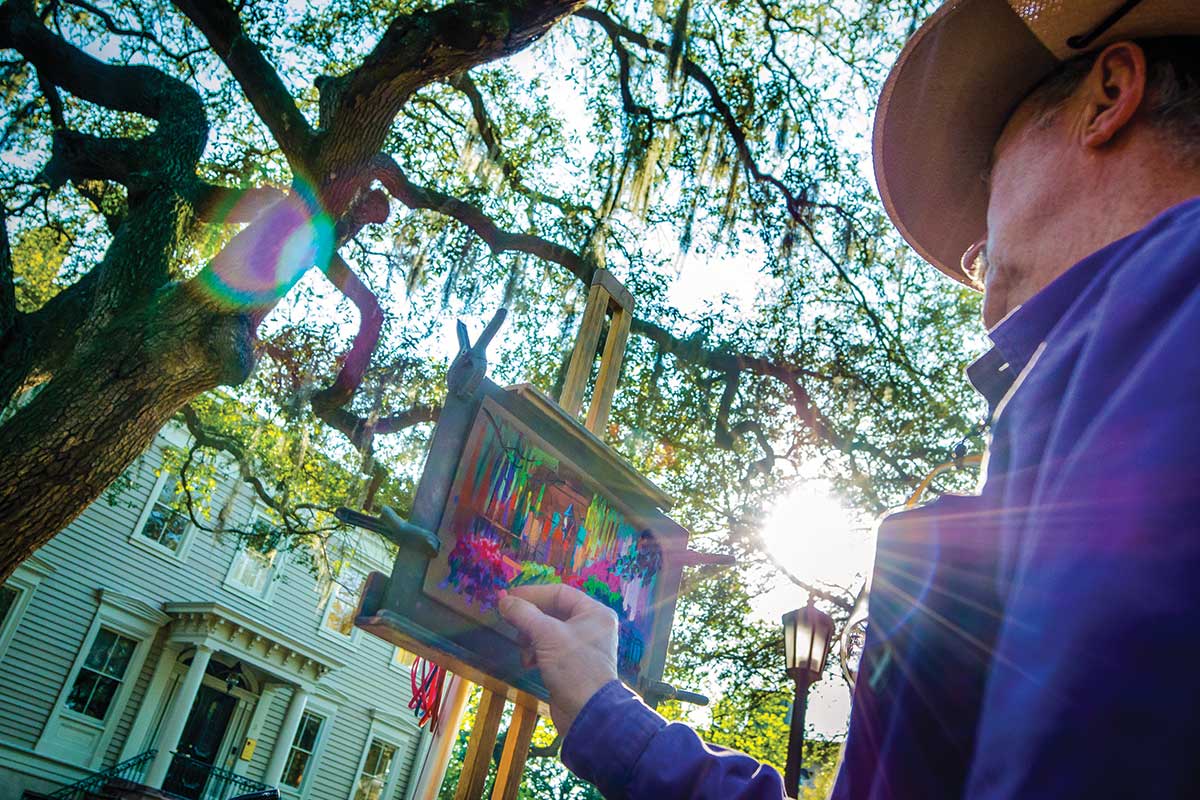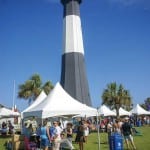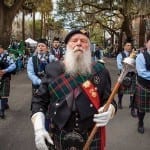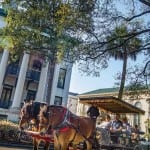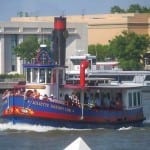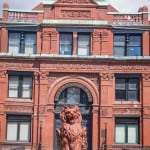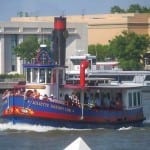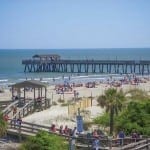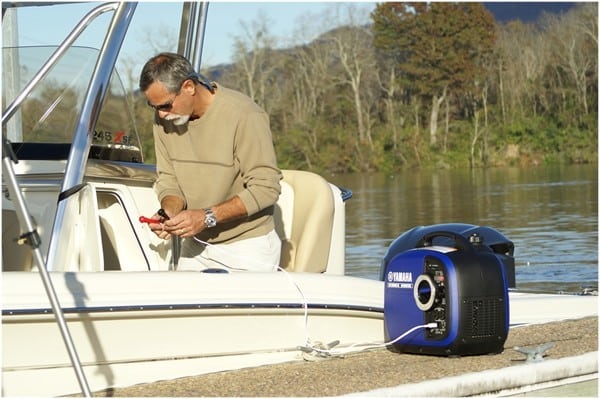Savannah offers her treasured charm, history, and beauty to visitors arriving by land and by water.
Starting with the first 144 British colonists who arrived by boats from South Carolina in 1733, Savannah, Georgia, has been attracting seafarers with its Southern charm and historic beauty for more than two centuries. Bustling River Street is always ready to greet visiting cruisers with brick façades, ornate iron balconies, and cobblestone streets.
Arts & Crafts
A festival atmosphere pervades its nine blocks that front the Savannah River. Arts and craft vendors sell their wares at the open-air market on the waterside of the street, while on the opposite side rows of former cotton warehouses offer an array of Southern culinary delicacies, art, antiques, and curios. You could easily spend a day meandering River Street, but a four-letter word beckons you deeper into the city. That word is “tour,” and tour you must. The hardest part is deciding which kind of tour to take.
Savannahians have come up with a multitude of ways to view their city, which boasts one of the largest historic districts in the country. The most popular tours are by trolley and horse-drawn carriage, with guides delivering historical trivia as they point out significant homes and sites. Most of the tours focus on the city’s rich history and architecture, but some take a spooky turn and focus on Savannah’s many ghost stories. You can also take your own self-guided tour in this walkable city.
For those who prefer to plot their own course, stop by the visitor’s center at 1 West River Street and pick up a map. A three-hour stroll through the heart of the historic district crosses a cobblestone drive climbs historic iron stairs and emerges onto Bay Street, where historical markers and architectural treasures tell the city’s story.
Stop at the two cannons that were given to the city in 1791 by then-President George Washington following his visit to Savannah. The “Washington guns” were captured when Lord Cornwallis surrendered in 1781 at Yorktown, marking the end of the Revolutionary War. Two years after Washington’s visit, Eli Whitney invented the cotton gin at a plantation near Savannah owned by Catherine Greene, wife of Revolutionary War hero Nathanael Greene. Whitney’s invention helped Savannah’s port become a world leader in the cotton trade. The red brick Old Savannah Cotton Exchange dates back to 1887 and looms over River Street as a testament to the days when cotton was king. Venture south on Bull Street past the 50-foot-tall marble obelisk that marks the grave of Nathanael Greene, who died in 1786.
The next block down reveals Wright Square. It was laid out in 1733 by James Oglethorpe, a founding father of the city and the colony of Georgia. Oglethorpe and early colonists befriended the Yamacraw Indians led by Chief Tomochichi, who died in 1739 and is buried in the square. A large stone marks the grave of the tribal leader who traveled to England with Oglethorpe and was instrumental in paving the way for smooth Indian-colonist trade. Back in those days, a colonist could buy a pound of tanned deerskin with a strand of 30 beads.
Colorful History
Farther down Bull Street at Madison Square, history shifts to the Civil War. Union General William Tecumseh Sherman and his troops occupied the city without opposition on December 21, 1864, marking the end of his March to the Sea campaign. On the western side of the square sits the Green-Meldrim House, which served as Sherman’s headquarters.
The Gothic Revival mansion is one of many architectural gems built by Savannahians who had grown wealthy from the cotton trade. They hired top architects and left behind stellar examples of such architectural styles as Federal, Georgian, Greek Revival, Italianate, and Gothic Revival. Savannah’s historic homes are also admired for the ornate ironwork found on balconies, doors, stair rails, gates, window guards, and columns. But nothing says Savannah like the moss-draped live oaks that lend shade and mystery to the homes that repose behind their stately trunks and branches; many fine examples are on Gaston and Abercorn Streets.
Along with picturesque houses, Savannah is home to several historic churches. Baptists, Jews, Methodists, Episcopalians, and Presbyterians, among others, contribute ornate architectural marvels to the city’s historic significance. But none stand out like the Cathedral of St. John the Baptist with its stunning twin spires, stained-glass windows and vaulted ceilings. The Roman Catholic cathedral presides over Lafayette Square across from the childhood home of writer Flannery O’Connor.
Don’t let the long line outside Leopold’s Ice Cream on Broughton Street dissuade you from tasting the nearly 100-year-old family business’ cold, creamy treats; they’re well worth the wait. For more substantial fare, Savannah has plenty of local restaurants serving Southern cuisine, from the elegant Olde Pink House to the casual Paula Dean’s The Lady & Sons. Savannah’s downtown also offers a multitude of clothing, antique, gift, and art shops, and it plays host to popular events throughout the year including book, film and music festivals. The city also claims host to the third-largest St. Patrick’s Day parade in the world.
History of History
Those who want to learn more about Savannah’s history can also explore some of the city’s many museums. The Savannah History Museum on Martin Luther King Jr. Blvd. gives a more detailed overview of the city’s story and begins with its founding by Oglethorpe on Yamacraw Bluff in 1733. Of course, no cruiser’s trip to Savannah would be complete without visiting the Ships of the Sea Nautical Museum. The museum occupies the three-story historic house once owned by William Scarborough, who was a major investor in Savannah, the first steamship to cross the Atlantic Ocean. The 98-foot vessel’s voyage was a big deal in 1819; President James Monroe appeared for the ship’s launch and stayed in Scarborough’s home. Unfortunately for Scarborough, the venture that made the history books was a financial failure and led to his bankruptcy a year later.
Though Scarborough’s investment failed, his city has a long history of success as a shipping center, and its container port is the fourth largest in the country. The city also makes sure its visiting recreational cruisers feel welcome; 1,100 linear feet of public dock and bulkhead space is available for transients along River Street, and hotels and the River Street Market Place also offer dock space. But if you stay along River Street, be prepared to enjoy the late-night revelry, as Savannahians love a party. For a quieter night, a half-dozen or so full-service marinas can be found on the outskirts of Savannah. But wherever you dock, the city’s historic charm is sure to draw you in. Faced with so many choices about what to do, you might decide to stay a little longer.
Resources
Savannah Visitor Center
1 West River Street • (912) 651-6662
visitsavannah.com
City public docks and bulkheads
River Street, Savannah • (912) 651-6470; savannahga.gov
– First-come, first-serve; hourly and overnight stays offered
Bahia Bleu Marina
2812 River Drive, Thunderbolt • (912) 434-1005; morningstarmarinas.com
Coffee Bluff Marina
14915 Coffee Bluff Road, Savannah • (912) 231-3628; coffeebluffmarina.info
Hyatt Docks of Savannah
River Street, Savannah • (912) 238-1234 ; Savannah Hyatt Docks
– Overnight dock guests have access to hotel’s amenities
Isle of Hope Marina
50 West Bluff Drive, Savannah • (912) 354-8187; iohmarina.com
River Street Market Place Dock
River Street, Savannah • (912) 398-6038; riverstreetmarketplace.com/dock
Thunderbolt Marina
3124 River Drive, Thunderbolt • (912) 356-3875; thunderboltmarine.com/marina
Savannah Harbor Resort
1 Resort Drive, Savannah • (912) 201-2021; marriot.com/
– Guests can take a ferry across the river to the city.
By Don McCloud, Southern Boating Magazine January 2017


